
The United States Army Special Forces (SF), colloquially known as the "Green Berets" due to their distinctive service headgear, is the special operations branch of the United States Army. Although technically an Army branch, the Special Forces operates similarly to a functional area (FA), in that individuals may not join its ranks until having served in another Army branch.

The United States Army Special Operations Command (Airborne) (USASOC ( YOO-sə-sok)) is the command charged with overseeing the various special operations forces of the United States Army. Headquartered at Fort Liberty, North Carolina, it is the largest component of the United States Special Operations Command. It is an Army Service Component Command. Its mission is to organize, train, educate, man, equip, fund, administer, mobilize, deploy and sustain Army special operations forces to successfully conduct worldwide special operations.

The 10th Special Forces Group (Airborne) (10th SFG (A), or 10th Group) is an active duty United States Army Special Forces (SF) Group. 10th Group is designed to deploy and execute nine doctrinal missions: unconventional warfare (UW), foreign internal defense (FID), direct action (DA), counterinsurgency, special reconnaissance, counterterrorism, information operations, counter-proliferation of weapon of mass destruction, and security force assistance. 10th Group is responsible for operations within the EUCOM area of responsibility, as part of Special Operations Command Europe (SOCEUR).
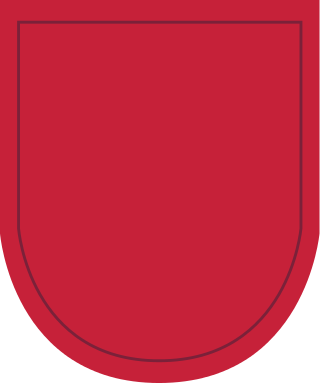
The 7th Special Forces Group (Airborne) (7th SFG) (A) is an operational unit of the United States Army Special Forces activated on 20 May 1960. It was reorganized from the 77th Special Forces Group, which was also stationed at Fort Liberty, North Carolina. 7th Group—as it is sometimes called—is designed to deploy and execute nine doctrinal missions: unconventional warfare, foreign internal defense, direct action, counter-insurgency, special reconnaissance, counter-terrorism, information operations, counterproliferation of weapons of mass destruction, and security force assistance. The 7th SFG(A) spends much of its time conducting foreign internal defense, counter-drug, and training missions of friendly governments' armed forces in South, Central, and North America as well as the Caribbean. 7th SFG(A) participated in Operation Urgent Fury in Grenada in 1983, and in Operation Just Cause in Panama in 1989. The 7th SFG(A) has, like all the SFGs, been heavily deployed to Iraq and Afghanistan in the War on Terror. The 7th SFG has lost more SF soldiers in the Global War on Terrorism than any other SFG.
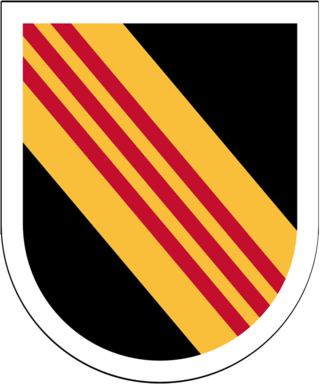
The 5th Special Forces Group (Airborne) (5th SFG (A), 5th Group) is one of the most decorated active duty United States Army Special Forces groups. The 5th SFG (A) saw extensive action in the Vietnam War and played a pivotal role in the early months of Operation Enduring Freedom. 5th Group is designed to deploy and execute nine doctrinal missions: unconventional warfare, foreign internal defense, direct action, counter-insurgency, special reconnaissance, counter-terrorism, information operations, counterproliferation of weapon of mass destruction, and security force assistance.

The 1st Special Forces Group (Airborne) (1st SFG) (A) is a unit of the U.S. Army Special Forces operating under the United States Pacific Command. It is designed to deploy and execute nine doctrinal missions throughout the Indo-Pacific Command area of operations: unconventional warfare, foreign internal defense, direct action, counter-insurgency, special reconnaissance, counter-terrorism, information operations, counterproliferation of weapon of mass destruction, and security force assistance.
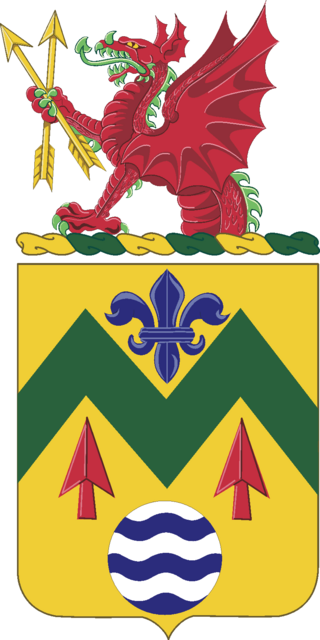
The 528th Support Battalion is a battalion of the United States Army. The 528th Support Battalion's mission is to provide rapidly deployable CSS and HSS to ARSOF as directed. The 528th Support Battalion's strengths lie in its capability to support ARSOF-unique and low-density weapons and vehicles. The 528th complements [organic] 22 ARSOF CSS, HSS, and signal units. The support battalion consists of a headquarters and main support company (HMSC), three forward support companies and may receive augmentation from Theater Army. As part of Army Special Operations Command the unit, along with the 112th Signal Battalion, is tasked to provide full logistical support to Army Special Operations Forces forming along with several other units what was known as Special Operations Support Command, later reorganized as the 528th Sustainment Brigade. Brigade Troops Battalion includes a wide variety of military occupation specialists: riggers, drivers, medics, mechanics, engineers, fuelers, cooks, etc.

The 19th Special Forces Group (Airborne) (19th SFG) (A) is one of two National Guard groups of the United States Army Special Forces. 19th Group—as it is sometimes called—is designed to deploy and execute nine doctrinal missions: unconventional warfare, foreign internal defense, direct action, counter-insurgency, special reconnaissance, counter-terrorism, information operations, counterproliferation of weapon of mass destruction, and security force assistance. Headquartered in Bluffdale, Utah, with detachments in Washington, West Virginia, Ohio, Rhode Island, Colorado, California and Texas, the 19th SFG(A) shares responsibility over Southwest Asia with the 5th Special Forces Group (Airborne), and the Pacific with the 1st Special Forces Group (Airborne). Company A, 2nd Battalion is one of several National Guard units with colonial roots.
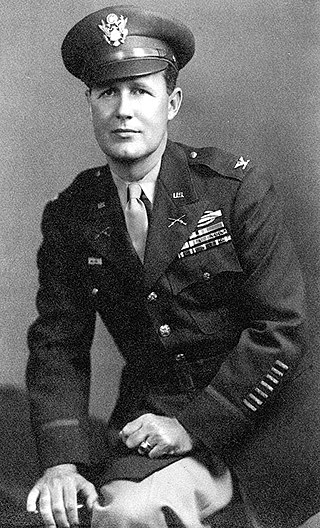
Brigadier General Donald Dunwody Blackburn was a United States Army Special Forces officer, best known for his significant command and developmental roles in the U.S. Army Special Forces. He was also the commander of the highly classified Studies and Observations Group from 1965 to 1966. Since most of his military career involved clandestine operations, many of Blackburn's exploits remain unknown to the general public.

Brigadier General Hector E. Pagan is a United States Army officer who is the first Hispanic of Puerto Rican descent to become Deputy Commanding General of the U.S.Army John F. Kennedy Special Warfare Center and School at Fort Liberty, North Carolina.

Lieutenant General John F. Mulholland Jr. is a retired senior officer who served in the United States Army and is the former Associate Director for Military Affairs (ADMA) at the Central Intelligence Agency. Mulholland previously served as Deputy Commander of the United States Special Operations Command, after having previously served in the US Army's Special Forces. He commanded special operations task forces in both Operation Enduring Freedom and Operation Iraqi Freedom, earning an appointment as Deputy Commanding General of the Joint Special Operations Command and later as Commanding General, United States Army Special Operations Command at Fort Bragg.

Brigadier General David G. Fox is a retired United States Army officer who served as the commanding general of the Installation Management Command Korea Region.

The U.S. Army Special Forces traces its roots as the Army's premier proponent of unconventional warfare from purpose-formed special operations units like the Alamo Scouts, Philippine guerrillas, First Special Service Force, and the Operational Groups (OGs) of the Office of Strategic Services. Although the OSS was not an Army organization, many Army personnel were assigned to the OSS and later used their experiences to influence the forming of Special Forces.

John Francis Campbell is a retired United States Army general who was commander of the Resolute Support Mission and United States Forces – Afghanistan. He was the 16th and last commander of the International Security Assistance Force. Prior to this, he served as the 34th Vice Chief of Staff of the United States Army. He is currently a member of the board of directors of IAP, and BAE Systems, and serves on the advisory board of Code of Support Foundation.

The United States Army Special Operations Aviation Command (USASOAC) provides command and control, executive oversight, and resourcing of U.S. Army Special Operations Command (USASOC) aviation assets and units in support of national security objectives. USASOAC is responsible for service and component interface; training, doctrine, and proponency for Army Special Operations Aviation (SOA); system integration and fleet modernization; aviation resource management; material readiness; program management; and ASCC oversight. USASOAC was established 25 March 2011 consisting of 135 headquarters soldiers and subordinate units totaling more than 3,300 personnel, include the 160th Special Operations Aviation Regiment (Airborne), (160th SOAR (A)) which features 4 Aviation Battalions, the USASOC Flight Company, the Special Operations Aviation Training Battalion, the Systems Integration Management Office, and the Technology Application Projects Office. The first commander of USASOAC was Brig Gen. Kevin Mangum.

Thomas David "Tom" Waldhauser is a retired United States Marine Corps general who was the Commander of United States Africa Command. He previously served as Director for Joint Force Development, J7 on the Joint Chiefs of Staff, Commanding General, I Marine Expeditionary Force, and Commanding General, United States Marine Forces Central Command. Waldhauser is an alumnus of Bemidji State University.
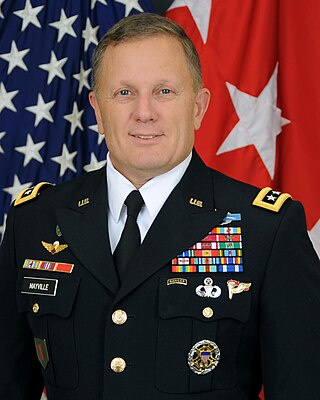
William Charles Mayville Jr. is a retired United States Army lieutenant general who served as Deputy Commander, United States Cyber Command. After his military retirement, Mayville joined Korn Ferry consulting firm.
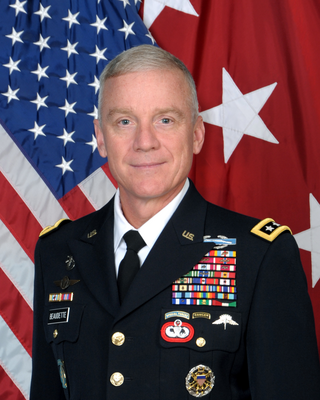
Lieutenant General Francis Michel Beaudette is a retired United States Army officer who served as the commanding general of the United States Army Special Operations Command from 2018 to 2021.

Patrick B. Roberson is a United States Army Major General, serving as the Deputy Commanding General of the United States Army Special Operations Command since August 2022. He previously served as Commanding General, United States Army John F. Kennedy Special Warfare Center and School from August 2019 to August 2022, and as Commander of Special Operations Joint Task Force-Operation Inherent Resolve Iraq and Syria July 2018 and June 2019.



















